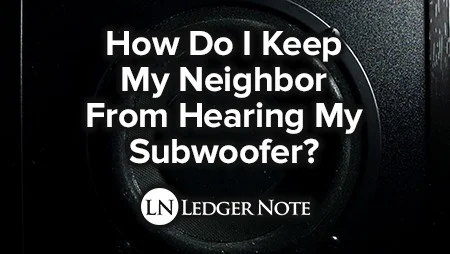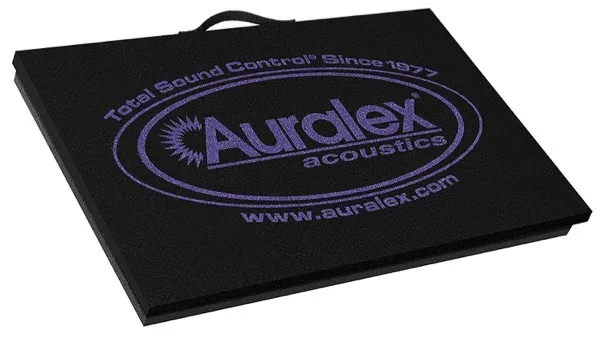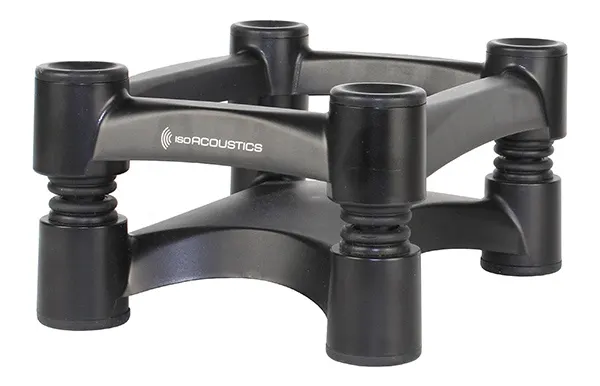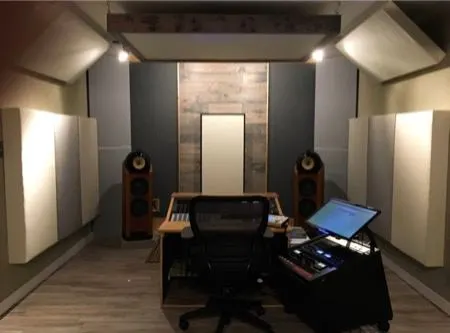Ah, the classic concern of good music-loving neighbors everywhere: “Can I use a subwoofer in my apartment without getting a noise complaint from my neighbors?”

The fact that you’re asking this first before you just start bumping the bass is fantastic, because it means you have a chance to be proactive about it. If you live in an apartment, condominium, townhouse, duplex, or any other joined living space then this is for you.
If you’re looking this up prior to even buying a subwoofer, you’re awesome for being a considerate person. Let us help show you the best studio subwoofers in all price ranges so you can get the max enjoyment and productivity out of your hard-earned money.
How to Avoid a Subwoofer Noise Complaint From Your Apartment Neighbor
Question:
Hi, LedgerNote. I’ve been living in apartments since I started college. I’m now in my 30’s and still haven’t bought a subwoofer because I’m so conscientious about being the “good neighbor.”
As you can guess, I’ve been waiting for over 10 years and don’t want to wait any longer. I won’t play it loud, I just want to round out the bass. Is it possible to have a sub, not live on the ground level of an apartment building, and not make your neighbors mad and receive noise complaints?
An eager bass enthusiast,
Ron O.
Answer:
Hi, Ron. The first thing is to understand what the actual problem is. The issue isn’t the volume, it’s the vibrations (though volume contributes to vibrations). Bass frequencies have long wavelengths that can travel through drywall, insulation, and the floor whereas a high frequency sound will be reflected back for the most part.
This also means that under no circumstances should you be using a down-firing subwoofer, which literally points the sound waves at the floor.
Your goal is to reduce the vibrations. Let’s explore how to achieve that, in the most obvious and easy steps to the more obscure ones for the dedicated.
By the way, you’ll see a lot of nonsense advice out there like using 4D “buttkickers” under your sofa to pretend you can feel the bass, wearing headphones that can’t even pump out low frequencies, and using tactile transducers. None of that deals with the actual question, only dodges answering it. Here’s the real deal:
Near-Field Placement
The first and easiest tactic to employ is moving your subwoofer closer to you so you can turn it down in volume. The lower the volume, the less vibrations you’ll be emanating out through your walls, ceiling, and floor.
What you get is an equally loud experience at a lower volume where you can still feel the sub-bass without having neighbors banging on your door. Combine this with the sound isolation tips below and you’ll get most of the way to bass freedom.

As a bonus, you’ll receive a purer version of the waveform directly to your ear before it’s had a chance to be corrupted by bouncing all around the room. This is great if you’re mixing music, versus just watching a movie.
Isolation Pad
We’ve established that the vibrations are the main issue, so what you need to do next is achieve is bass isolation. This is done with an isolation pad. There are all manner of isolation pads out there, and you can even make one yourself, but the quickest and cheapest is to scoop up one of these Auralex Gramma pads:

What these do is separate your subwoofer from the floor with a spongey or rubbery material full of air gaps. These pads dampen the vibrations before they have a chance to hit the floor and travel on to your neighbor’s home. The floor is like a giant resonator for bass, so isolation is a must to avoid angry neighbors.
It also provides a more focused low-end in your listening with a tighter stereo field reproduction. I’m going to go ahead and say that anyone with a subwoofer should be using an isolation pad as well as the decoupling method below if they want to get the most out of their sub.
Decouple the Subwoofer from the Ground
A subwoofer decoupler can come in many shapes, but the goal is always the same, which is to decouple the subwoofer from the floor. This means that you want to increase the distance a bit and provide less material for vibrations to be carried through physically. Place your isolation pad on top or vice versa and you’ll have made a lot of progress.
These may come in the shape of short speaker stands, tiny metal decoupling pegs, or rubber feet. The entire idea is to absorb vibrations while minimizing any path they have to the ground. Think of it like floating your subwoofer in the air.
For the life of me, I can’t find a picture of decoupling pegs to show you. They’re like four upside down triangles or cones that come to a point where they make contact with the floor. I may be using the wrong terminology for the name here. They achieve the same effect as the speaker stands with rubber material as seen below:

As you can see in the image above, this particular option minimizes contact not only with the ground but the subwoofer as well and places vibration-absorbing rubber between them. This is a great solution, especially if you can combine it with the isolation pad method.
Acoustic Treatment Bass Traps
Bass traps are a huge discussion that we can’t go all out on. They don’t deal with vibrations, but the sound waves that can hit the wall and create more vibrations.
They also reduce the reflections of the sounds which bounce around and make your bass sound like crap. All normal sized rooms have severe bass issues that people try to overcome with volume. Acoustic treatment is the answer but it takes a lot of bass traps to really solve the issue. Even a few can help, though.

They’re similar to isolation pads except you place them on your walls and in the corners of the room to absorb stray bass waves. They absorb them through allowing the fibers in insulation or rigid fiberglass to vibrate and convert the kinetic energy into heat.
These will be the main contributors to making your subwoofer sound great but do the least about noise complaints. They’ll help but not like the miracle cures above.
If you use these four methods in conjunction (or leave out the bass traps if you must), you’ll be able to enjoy a louder bass experience while listening to your favorite records or watching movies, all without getting evicted for being the ridiculous neighbor.
If you own a condo or duplex and can do some construction, consider looking into how to soundproof a room. As always, respect other people and use your brain and you can find a way that allows everyone to be happy.
Happy listening, bass fiends. Enjoy your subwoofer in your apartment, complaint free.
Jared